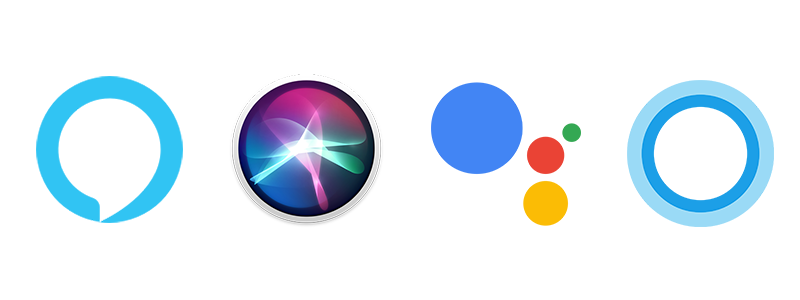Everything you need to know about Conversational AI
In this blog we will unpack what conversational artificial intelligence (AI) is, how it works, and how your business can implement it.
If your business is ready to take conversational AI to the next level or you want to learn more about what it can bring to your company, this blog will guide you through everything from the basics of what an ai-powered chatbot is, drill down to benefits that both you and your customers can enjoy, and where this technology can deliver the most value to your business.
Some of the common questions we'll address are:
-
- What is conversational AI and how does it work?
- What is meant by conversational AI?
- Why is conversational AI important?
- How do you implement conversational AI?
Jump to a specific section.
- What Conversational AI is
- Types of Conversational AI
- How Conversational AI works
- Conversational AI & Chatbots
- Outcomes of Conversational AI
- Use Cases of Conversational AI
- Conversational AI by Industry
- Conversational AI Advocates
- How to implement Conversational AI
What Conversational AI is
Conversational AI is a combination of natural language processing (NLP) and traditional software such as digital employees (AI-powered chatbots), voice assistants, or a voice recognition system. People can either type or speak into the software application. The beauty of conversational AI is that it enables humans and computers to talk and work together in a more natural way.

What is Natural Language Processing (NLP)?
Natural language processing is a branch of computer science where Artificial Intelligence (AI) is used to model, interpret and understand how humans speak. This is how AI-powered digital employees are given the ability to understand text and speech, context and complexities in language in the same way humans can.
What is Machine Learning (ML)?
Machine Learning is a subfield of AI. It is made up of algorithms, features and data sets which improve with experience and training. As the AI’s input increases and it continues to be ‘taught’ by humans interacting with it, the platform becomes better at recognising patterns and uses these to create predictions.
E.g: A digital employee in a retail customer support role frequently receives the, “Where’s my order?” enquiry. It learns through repetition how to handle the conversation, and formulate automated conversations that return the answer.
Types of Conversational AI
There are a number of conversational AI out there such as Siri, Alexa and Google. The most popular types of conversational AI include:
-
- Chatbots / Digital Employees / Digital Assistants
- Voice Assistants
- Mobile Assistants
- Interactive Voice Recognition Systems
How Conversational AI works
Conversational AI works by using contextual dialogue through NLP and complementary algorithms. Over time, as the AI is exposed to a greater number of user inputs (think customers asking a chatbot on a retail site where their order is), it becomes smarter and predicts what users are most likely to ask.
This allows for the AI to recognise patterns, make decisions and appropriate predictions based on what users commonly ask.
Conversational AI engages with customers through four key steps;
-
- Chatter Input:
The ‘chatter’ or user makes an utterance through either voice or text. An utterance can be an enquiry, statement or answer. - Input Analysis:
The input is analysed by natural language understanding (NLU) if the input is text-based. If the input is speech-based, Automatic Speech Recognition (ASR) is used to understand what’s said, then broken down into language tokens that are analysed further. - Dialogue Management:
Natural language generation is used to create an appropriate response to the user’s question. - Reinforcement Learning:
The AI is taught by analysing more user inputs what questions are most commonly asked. It learns how to refine its responses over time to increase accuracy in the answers it delivers.
- Chatter Input:
Conversational AI & Chatbots
On the surface conversational AI and chatbots seem similar, yet their capabilities are quite different.
Traditional chatbots are given specific keywords, and instructed how to respond when a user asks a question with that keyword in it. Chatbots require people in the backend to write scripts and dialogues to make them work. This means that the accuracy of a good response and capability of such a chatbot can be limited.
On the other hand, conversational AI is progressively taught based on reinforcement learning, in which users can ask the digital employee a variety of questions and the digital employee learns over time what the best response is.
E.g: How Uber drivers ‘teach’ the algorithm how to drive, preparing the future for driverless cars.
The table below illustrates these differences between conversational AI and chatbots:
|
|
|
||
|
Key Outcomes |
Key Components |
Key Outcomes |
Key Components |
|
Easy to scale, used across many channels |
Machine Learning/NLP |
Predictable answers |
Scripted Code |
|
Smart and dynamic system |
Algorithm Training, intent based |
Keyword-based responses |
No Algorithm Training, decision tree logic |
|
Deep understanding of customer needs |
Sentiment Analysis + Data Insights |
Surface-level understanding of customer |
Integrated Presence |
Outcomes of Conversational AI
For your customers:
On a customer-facing level, a well-trained digital employee delivers fast, accurate and appropriate responses to busy and impatient customers. The quicker your digital employee is able to deliver them value for their time, the better their experience will be.
Conversational AI also means that customers can be educated on how to give the digital employee the answers it needs. This is done through helpful prompts (For example: What is your name? What is your favourite type of coffee?) The digital employee gathers information about a customer, enabling it to understand individual customers to ensure they are receiving a personalised experience that answers their questions and helps guide them to a solution.
This guidance can also be helpful for those customers who are unsure about what to ask. If a customer is enquiring about a perfume in a retail store, the conversational AI can direct them to the correct department to someone that understands those needs at a deeper level, and thus give a more relevant experience as fast as possible.
For your business:
Conversational AI means any visitors to your website page can be understood better than ever before.
From the first touchpoint, conversational AI means that the needs of your web visitors can be better understood to help speed the process to convert them from visitors into leads and then into customers. On top of this, the digital employee provides them with relevant content and information to guide their decision-making process.
With conversational AI aiding a customer to find the answers they need fast, a digital employee excites a prospect into taking action to move along the customer journey - and this means that your sales team can be ready to approach them when they signal interest in buying from your company.
Use Cases of Conversational AI
There are 2 main use cases for Conversational AI.
The first of these is Customer Success Automation.
As technology works to automate low value enquiries, it allows live chat agents to truly add human value when it counts. Support teams focus on delivering what they love and delighting customers whilst digital employees do the heavy lifting on lower value enquiries.
Conversational AI answers frequently asked questions faster, offers customers personalised advice, and it automates these conversations at scale. Plus, a digital employee always has a positive attitude and is ready to help any customer at any time, anywhere in the world.
The second use case is Marketing Automation.
Conversational AI enables seamless onboarding intuitively, and removes the need for keyword-driven forms. With customers able to ask the digital employee exactly what they need help with, their experience is improved and the onboarding process can be closed off faster.
Secondly, conversational AI means that wherever a customer requires assistance they can engage with the digital employee at their convenience.
Lastly, using conversational AI means leads are handled more effectively and enquiries are addressed immediately. Customers are guided towards the appropriate sales agent who assists them and moves them along the sales funnel quicker.
Conversational AI by Industry
As the value of conversational AI has grown over the past few years, so too have the number of industries embracing the technology.
Some of these industries include:
-
- Financial Services (Check out this article by our friends at Squirrel)
- Retail (Have a nosy at this article about our partnership with Noel Leeming)
- Airlines & Travel (check out this article to read about our partnership with Online Republic)
- KiwiSaver (read about about our friends at Tower Insurance and their digital employee)
- Energy & Utilities (Discover our partnership with ACC and their chatbot in this article)
The primary reasons many industries have adopted the technology is to keep up with customer demands, reduce hours of administrative work, reduce the overall cost of hiring and customer support agent headcount, and allow for claims to have faster resolution times for customers.
Conversational AI Advocates
“The Ambit team has a good understanding of financial services and could help us simplify the financial language in Bosley’s conversations.”
-Tim McFarlane, Chief Customer Officer, FlexiGroup

“Ambit were responsive and helped us operate within our constraints to maintain momentum on the project. They turned work around so fast that often they were waiting for us!”
- Sam Lake, Senior Digital Transformation Manager, Vector

How to Implement Conversational AI
The key goal to implement an effective conversational AI digital employee is to create one that represents your brand in the most engaging way possible.
Key steps you need to consider when doing this are:
-
- What is the problem you are trying to solve?
- What is your business’ vision for the digital employee? What do you want it to achieve now and in the future?
- Do you want to build your own, or does it make sense to partner with a vendor that has already built the technology for you to utilise?
- What is the problem you are trying to solve?
Summary
Conversational artificial intelligence and AI-powered digital employees are critical additions to any business and bring with them a large number of benefits.
They provide a greater level and deeper understanding of your customers, are ready to meet those customers at any stage of their buyer journey, and give useful information to them relevant to their needs at the right time.
With many industries adopting the technology to create better customer experiences and generate higher levels of satisfaction, incorporating AI powered digital employees means that:
Businesses will:
-
- Reduce their overhead costs
- Automate conversations at scale
Invest more money into areas of the business that need it the most
In short, conversational AI is an effective way in which your business can save money as well as generate it.
Conclusion
Ready to dive in the deep end and see how conversational AI can transform your business? Book a Demo to see Ambit in action



